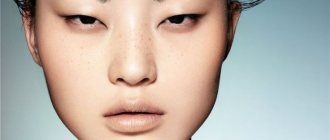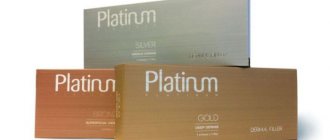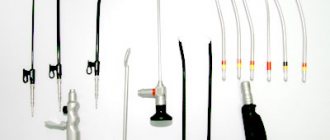The human face has a certain level of symmetry, but no one has a 100% symmetrical face, yes, people are a little asymmetrical to begin with. This is not a discovery, try to take your passport photo and divide it vertically into two parts, and then mirror each and try to put them in pairs - you will see a completely alien face, you will get a person similar to you, but not you.
But why does asymmetry of faces arise, since it is logical that it is easier for nature to make a copy on one side and the other? Firstly, there is no complete symmetry in any paired human organ, that is, this in itself is normal, and secondly, the masticatory muscles can make the face asymmetrical.
The muscles of mastication are the muscles of the human head that provide the chewing process and affect the appearance of the face. Currently, anthropologists identify four chewing muscles in humans:
- masticatory muscle;
- temporal muscle;
- medial pterygoid muscle;
- lateral pterygoid muscle.
Diagram of the location of the human masticatory muscles.
All these 4 muscles are attached to the lower jaw, and are innervated by the trigeminal nerve (the largest of the 12 cranial nerves). At the same time, the chewing muscles, as well as the calf muscles, are the strongest muscles of the human body.
Attraction
When it comes to physical attraction, cultural forces far outweigh biological ones. However, there are a couple of features that are seen as universally appealing.
Across cultures and throughout time, tall height has been considered desirable for men. For women, a good difference between waist and hip measurements is globally attractive. Of course, these two characteristics are only one aspect in a complete set of qualities for a particular person and do not overpower everything else. There really is something special about them simply because they are so versatile.
Using fillers
The volumetric modeling procedure is suitable for most people who ask a doctor about how to make their face symmetrical. Several years ago, this technology involved the subcutaneous injection of hyaluronic acid. However, microtraumas remained after the procedure. The essence of the technology remains the same, but now it is more advanced and is not associated with side effects.
Using microtraumatic cannulas, fillers are injected under the skin. These are substances based on hyaluronic acid. Correcting facial asymmetry with fillers (a photo of the drug injection process is presented below) is a safe and effective method. Moreover, the result is visible after the first procedure. In one session it is possible to raise an eyebrow, shape lips, and change the position of eyelids.
Immediately after the injections, the person can begin their daily activities. The swelling of the soft tissues is so insignificant that it is unnoticeable to others. It is only recommended to refrain from being in direct sunlight and visiting saunas and steam baths for a while.
Symmetrical faces
There is another feature that controls the perception of attractiveness in both men and women: facial symmetry. In many scientific experiments, researchers have confirmed that we rate symmetrical faces as more attractive. Like height in men and waist-to-hip ratio in women, this feature is more attractive to people of all cultures and historical times. But where did this biological attraction come from?
Mayan Ambassador's Tomb Reveals Rare Details of Mayan Officials' Lives
When to spray the garden in spring: choosing the right weather
A British cruise ship floats above the water: a bizarre optical illusion
Facial asymmetry: causes, norm and pathology
Many patients decide to see a plastic surgeon because they notice that their face or body is slightly asymmetrical. I have to explain to many of them that in nature there are no completely symmetrical faces and bodies: minor asymmetry is present in the structure of the face and body of any person, and a plastic surgeon will not expose you to the risks of surgery unless there are more serious reasons for this than minor asymmetry . However, there are cases in which asymmetry is very pronounced and actually ruins a person’s life. Today I would like to tell you in more detail within what limits asymmetry is acceptable and aesthetically neutral, and in what cases correction of facial asymmetry is required.
Let's start with the fact that the dominance of one “half” of the human body over the other is a completely normal and natural phenomenon , since each of us has a “leading” hand (some have the right, some have the left), “leading” “leg – it is usually not significant, but still larger than the other in size. As for the face, a slight difference in proportions is perceived by the human eye as harmony, but complete symmetry, on the contrary, is somewhat frightening: try taking your photograph from the front and placing a mirror exactly in the middle. This is what your face would look like if it were completely symmetrical.
A face with slight asymmetry and an example of complete “mirror” symmetry of the left and right halves of the face
It is completely within normal limits that one eye has a slightly different shape, that the tip of the nose “looks” a little to the right, and the right ear is located slightly higher than the left. The right side of the face of right-handers is slightly wider than the left, the facial features on the right are more “solid”, angular, more “masculine”. The left half of the face, on the contrary, is softer and more “feminine”. Moreover, both men and women. This is part of the reason why we like ourselves more from some angles than from others.
Natural asymmetry gives you charm and individual charm , which is difficult to capture and describe in words - it is read at the level of sensations. Plastic surgery for minor distortion (violation of proportions by less than 2-3 mm) is not indicated . Correction of facial asymmetry is required only if there is a pathological difference in proportions, which is conventionally equal to 2-3 mm in linear measurements and 3-5 degrees in angular measurements.
Significant facial asymmetry, photo
If we talk specifically about the asymmetry of facial features, it can be either congenital or acquired . The way to eliminate this problem also depends on what exactly is the cause of the asymmetry of features.
Thus, the causes of congenital asymmetry of facial features can be:
- Intrauterine trauma;
- Disorders associated with the formation of bone tissue;
- Pathologies of the formation of articular tissue and the joints themselves;
- Disturbances in the processes of formation of cartilage and articular tissues.
The causes of acquired facial asymmetry can be:
- Strabismus. This can cause distortions to form in the upper part of the face;
- Lack of teeth. If teeth are missing for a long time, this can lead to changes in the bite and deformation of the lower part of the face;
- Incorrectly healed fractures of the facial bones. The most common example is a crooked nose;
- Features of facial expressions. For example, you involuntarily squint only one eye or smile from only one corner of your mouth. In this case, your face may also become asymmetrical over time.
- Severe asymmetry of facial features can also be caused by damage to the facial nerve or partial immobility of the facial muscles. In this case, the main problem is not only and not so much asymmetry, but a violation of important functions: the eyelid does not work well, and the eye does not close or closes poorly; there are problems with facial expressions, eating, sleeping, speaking; the skin on the face sags a lot, facial wrinkles are smoothed out, one eye may become larger than the other... In this case, first of all, you should solve problems of a neurological nature and try to restore the functioning of the facial muscles, and only after that think about plastic surgery.
In cases where asymmetry causes psychological discomfort, but does not pose a threat to health, first of all you should think about how you can correct it with “improvised” means: hairstyle, makeup - in the case of women, or, for example, growing a mustache or beard - men. These techniques often help disguise pronounced asymmetry. In this case, the help of a plastic surgeon should be resorted to last.
Age asymmetry
In addition to skin aging and changes in facial contours, nature has given us another “gift”: it turns out that over the years, a person’s facial features become more asymmetrical. According to researchers, every 10 years of life is reflected on our face in the form of a displacement of facial structures by an average of 0.6 mm. These data were obtained by analyzing three-dimensional images of people at different periods of their lives, and this age-related asymmetry is most pronounced in the lower third of the face - in the mouth, chin, neck and cheeks.
If you still have questions, you can ask them in the “question-answer” section.
In order to accurately determine whether surgery is needed in your particular case, and whether surgery will help correct asymmetry, of course, you need a consultation with a plastic surgeon. Make an appointment for a consultation with plastic surgeon A.P. Panaetov. by phone (viber, whatsapp) or through the feedback form on the website:
How facial symmetry develops
Like all vertebrates, humans have bilateral symmetry relative to the sagittal plane. For the most part, our right side develops as a mirror image of our left. Beginning in embryonic development and during growth and maturity, the same developmental genes must be activated in the same cells, at the same time. In an ideal situation, this all unfolds equally on the left and right sides of the face and results in complete symmetry between the two halves.
What does symmetry represent?
The answer is proportionality, harmony and harmony of human and natural bodies - this is what the Greek sculptors thought.
That is why the concepts of beauty and symmetry are identical. Enough of the memories of a strictly symmetrical object of architectural monuments that repeat the patterns of standard ornaments, and the excellent harmony of vases of the ancient Greek era.
The fact of symmetry of the face and torso
In humans, it was popular with sculptors and artists of that era, and was used by them to add spirituality and expressiveness to the works they created.
Face of Venus de Milo
A rather striking example is the face of the Venus de Milo. People who pay attention to the symmetry of all objects criticized the asymmetry of the forms of the ideal of female beauty, suggesting that Milo's face would be even more beautiful if it had asymmetry.
But if you look at compositional photographs, you can immediately understand that this is not so.
Harmony
The concept of symmetry is mainly associated with harmony.
Symmetry comes from a word from the ancient Greek era called “proportionality,” which means something slightly proportional and harmonious in an object. A concept called mirror symmetry is used for humans.
Such symmetry is considered the main source of aesthetic admiration for a rather well-built body of a man or woman.
Functionality
It is this symmetry of the face that has its share of functionality, and not just beauty. Thus, a symmetrical arrangement of the eyes makes it possible to look at the world correctly, that is, the visual image becomes ideal, symmetrical limbs can allow a person to move in space very easily, and a smooth nasal septum can give a person even breathing.
But the symmetry of all living things on Earth is not formed with mathematical accuracy, because there is no uniformity of function and development.
Asymmetry
Minute fluctuations in gene expression and cellular activity result in subtle differences between the two halves of the face. Look closely at your face in the mirror (or a friend's face). You will see that one eye is slightly larger than the other and is also positioned higher. The nostrils usually show asymmetry in size and shape. The height and size of the ears can also vary surprisingly.
From Moscow to the Voronezh village. A Muscovite moved to the province and received 1 million rubles.
Volunteers from France will spend 40 days in a cave without electricity or smartphones
Shading from the scorching sun and rainwater: an eco-friendly hotel in Colorado
All this asymmetry adds up to an assessment of harmony for each human face. This perception greatly influences how attractive we judge a person to be. Using computer graphics, researchers can transform an image of a face that most people rate as very attractive into an unattractive one simply by adjusting the symmetry.
Botulinum toxin injections
The technique involves introducing a compound under the skin, which paralyzes the muscles. Before you try to make your face symmetrical with Botox, you should consult your doctor. The compound is toxic, in addition, most patients often develop all sorts of complications after the procedure. They go away on their own after a few days, but during this period they can cause discomfort to the person.
The result depends on the drug used and the qualifications of the doctor. It happens that after injections the muscles continue to work actively, or, on the contrary, they become blocked so that the effect of a lifeless mask appears on the person’s face. In addition, the degree of imbalance may increase.
Thus, only a doctor should provide information regarding how to make the face symmetrical. If he believes that it is advisable to administer botulinum toxin, he must make an appointment with a highly qualified specialist, whose reviews of his work are mostly positive.
Reason for attraction
The dominant scientific explanation for the attractiveness of facial symmetry is sometimes called the "evolutionary advantage theory." If the great choreography of developmental gene expression is perfectly executed, the result will be perfect harmony. All deviations from the norm indicate dysfunction, no matter how small. If on one side of the face a gene is expressed too much/too little, in a slightly wrong place or early/late, the tissue will take on a different shape. Most of these small fluctuations result in so-called microasymmetries, which cannot be detected with the naked eye. It is realized by people subconsciously.
Correction using decorative cosmetics
If the disproportion is minor, you can visually add symmetry to your face using makeup. For correction, you need to purchase a sculpting kit. It contains products with creamy and dry textures, presented in light, natural and dark shades.
To hide asymmetry, you must follow certain application guidelines. Rules for using the set:
- You need to darken those areas that are supposed to be reduced or completely hidden.
- The light shade is intended for areas that need to be visually enlarged.
The boundaries between areas should always be carefully shaded.
You can hide eye asymmetry using white and black pencils. Light eyelids need a smaller eyelid, dark ones need a larger eyelid.
Women are additionally recommended to give preference to casual styling and long oblique bangs. Such a hairstyle helps in some cases to hide even pronounced disproportion.
Physical ailments
Large differences in symmetry may indicate problems that have occurred (or are ongoing) with a person's growth and development. Some factors influencing facial harmony:
Lifehack “1000 hours outside the home”: it works wonders for people’s health and psyche
Why is the cat so important? The real reasons why cats ignore their owners
Just look at their faces! It seems these dogs were people in a past life
- infections;
- inflammation;
- allergic reactions;
- injuries, mutations;
- chronic stress;
- malnutrition, parasites;
- DNA damage;
- genetic and metabolic diseases.
Each of them is a potential obstacle to the success of the individual and his offspring. While the resulting facial asymmetry is the least of the concerns for the person himself, others react negatively to it. This may indicate a decrease in fitness. Since mating strategies invariably involve the pursuit of the highest quality mate, facial asymmetry is confusing to some. This is the current dominant view on why people prefer symmetry in each other's faces.
Diagnostics
Determining the cause of facial asymmetry is most often carried out by dentists or neurologists. If appropriate symptoms are detected, the patient is referred to otolaryngologists, oncologists, endocrinologists, and other specialists. The examination plan may include the following diagnostic procedures:
- Questioning, physical examination
. The doctor establishes the time and circumstances of the onset of the symptom and asks the patient about other manifestations of the disease. Evaluates the severity of asymmetry at rest, during facial and chewing movements. Detects other changes: swelling, redness, blanching, increased local temperature, tumor formations. - Dental examination.
Includes studying the condition of teeth, gums, hard and soft palates, mucous membranes of other areas, and bones of the facial skeleton. Allows you to confirm the presence of diseased teeth, inflammation, injury, suppuration, tumors. - Neurological examination.
The specialist studies the innervation of the facial muscles, asking the patient to perform certain movements: wrinkle his forehead, raise and lower his eyebrows, puff out his cheeks, show his tongue, bare his teeth, follow the movements of the neurological hammer with his eyes. The neurologist then palpates the available nerve exit points. - Otorhinolaryngological examination.
Provides for special research. If pathology of the paranasal sinuses is suspected, echosinusoscopy or diagnostic puncture can be performed. In case of complaints of hearing impairment, audiometry, tuning fork examination, etc. are performed. For vestibular disorders, vestibulometry and rotational tests are recommended. - Radiography
. Taking into account the identified pathological changes, the patient is prescribed an X-ray of the tooth, an X-ray examination of the jaw or paranasal sinuses. In some cases, radiographs of the skull and cervical spine are necessary. - Ultrasonography
. During the examination, sonography of the salivary glands, paranasal sinuses, and soft tissues may be performed. If signs of brain compression are detected, echoencephalography is indicated. - Other visualization techniques
. Most often, CT or MRI are used to clarify the diagnosis and to study in detail the nature of the changes, the volume and location of the pathological focus. For neurological pathology, PET-CT and SPECT of the brain may be prescribed. - Lab tests
. A general blood test determines the presence and severity of inflammation; the results of a microbiological study determine the pathogen and its sensitivity to antibiotics. In case of space-occupying formations, histological and cytological examination of smears, punctures, and biopsy specimens is carried out.
Elimination of facial asymmetry
In modern society
Preference for symmetrical faces is not limited to sexual attraction and mate choice. Harmony influences the choice of friends and allies. Everyone wants to be friends with the rich, powerful and popular. This is the reality of modern society where people can be “famous for being famous” without having produced virtually anything of value to anyone and without having any identifiable skills, talents or achievements.
It's no wonder that humans as a species read faces so much. They spend a lot of time looking into each other's eyes, even when not talking.
Facial symmetry is universally associated with attractive appearance in both sexes, and in sexual and non-sexual contexts.
Found a violation? Report content











